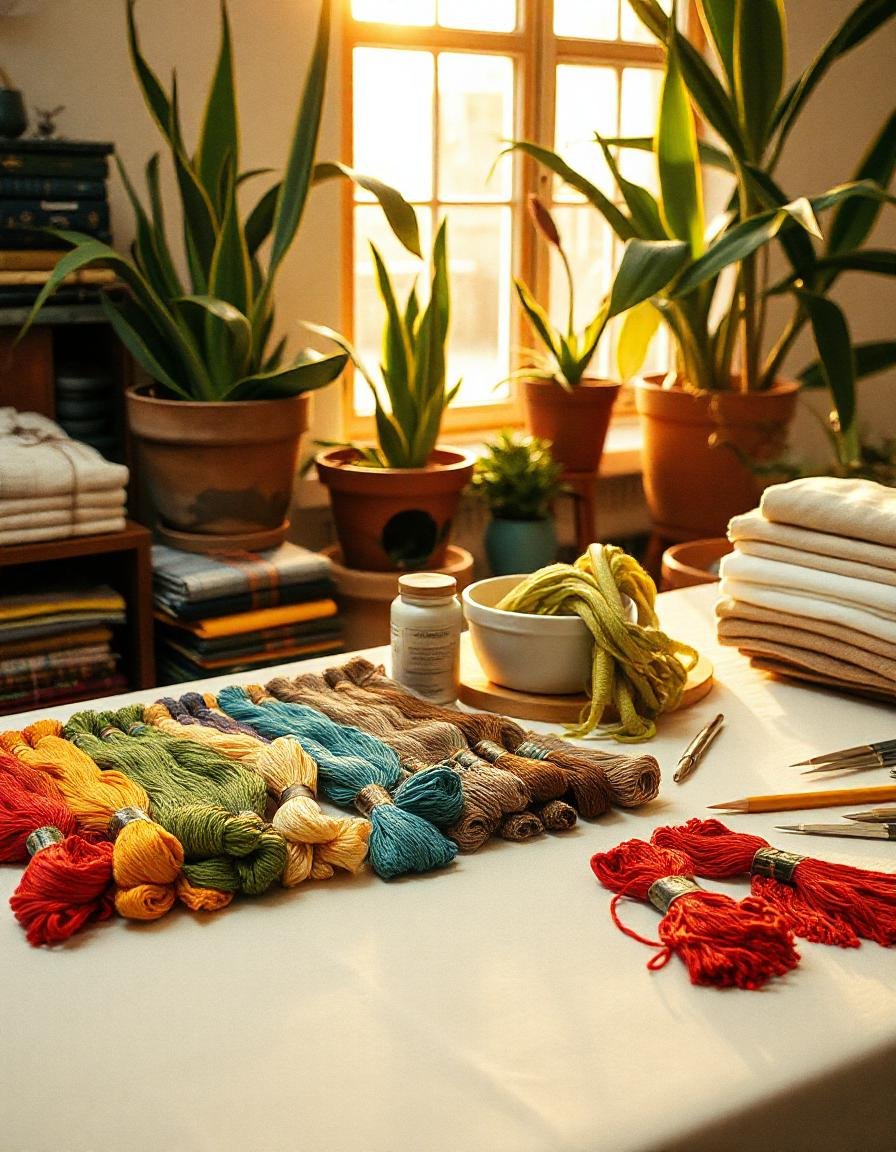You might wonder whether traditional hand embroidery is truly more sustainable than modern machine stitching. While hand embroidery often uses biodegradable natural fibers, the energy consumption and waste generated by machine techniques raise important questions about their eco-friendliness. Yet, both methods can adopt eco-conscious practices, complicating the comparison. What factors should you consider to determine which approach aligns best with your sustainability goals?
Overview of Traditional Embroidery
Traditional embroidery encompasses a rich tapestry of techniques and cultural significance passed down through generations.
You’ll find that each region has its unique styles, often reflecting local history and traditions. For instance, in many cultures, specific stitches and patterns symbolize important beliefs or events.
As you explore these techniques, you’ll notice how artisans use natural materials, such as cotton, silk, and wool, often dyed with plant-based colors. This connection to the environment highlights the sustainable practices inherent in traditional embroidery.
Understanding Modern Stitching Techniques
Modern stitching techniques have evolved considerably, incorporating innovative methods and materials that enhance both creativity and efficiency in the craft.
You’ll find techniques like machine embroidery, which allows for intricate designs to be completed in a fraction of the time it takes by hand. Digitization software now enables you to create unique patterns, personalizing your projects with ease.
Additionally, techniques like free-motion stitching give you the freedom to express your artistic vision without the constraints of traditional methods. You can also explore heat transfer and appliqué techniques, which add dimension and texture to your work.
Materials and Their Environmental Impact
Choosing the right materials for your embroidery projects can greatly impact the environment, so it’s essential to contemplate their sustainability.
Natural fibers like organic cotton, linen, and hemp are fantastic choices, as they’re biodegradable and often produced without harmful chemicals.
On the other hand, synthetic materials such as polyester and nylon can take centuries to decompose and often contribute to microplastic pollution.
When selecting threads and fabrics, consider those certified by eco-friendly organizations, as they guarantee responsible sourcing and minimal environmental impact.
Additionally, upcycling old textiles can reduce waste and give new life to forgotten materials.
Energy Consumption in Both Practices
Energy consumption plays an essential role in determining the overall sustainability of embroidery and stitching practices. When you’re evaluating these methods, consider how energy-efficient each one is.
Here’s what you should keep in mind:
-
Machine Type: Electric embroidery machines tend to consume more energy than hand-stitching tools.
-
Production Scale: Mass production can lead to higher energy usage, while small-batch creations might be more sustainable.
-
Process Duration: Longer stitching sessions increase energy consumption, so optimizing your workflow matters.
-
Source of Energy: Renewable energy sources can reduce the carbon footprint, while fossil fuels contribute negatively.
Waste Generation and Management
When it comes to embroidery and stitching, managing waste effectively is essential for enhancing sustainability in your creative process. By minimizing waste, you not only reduce environmental impact but also save resources and money. Here are some strategies you can implement:
| Waste Type | Management Strategy | Benefits |
|---|---|---|
| Fabric Scraps | Repurpose in smaller projects | Maximize material use |
| Thread Trimmings | Collect for stuffing or crafts | Reduce landfill contribution |
| Packaging Materials | Recycle or reuse | Lower waste generation |
| Tools and Supplies | Choose eco-friendly options | Decrease toxic waste |
| Unused Projects | Donate or sell | Give items a second life |
Conclusion
In the garden of creativity, every stitch you choose plants a seed for sustainability.
Traditional embroidery, like a slow-growing tree, nurtures the earth with its biodegradable fibers, while modern techniques, resembling a fast-growing vine, can sometimes choke the soil with synthetic waste.
Yet, by consciously selecting materials and methods, you can cultivate a blossoming landscape where both approaches thrive in harmony.
Remember, every mindful choice you make can transform your craft into a flourishing eco-friendly masterpiece.


